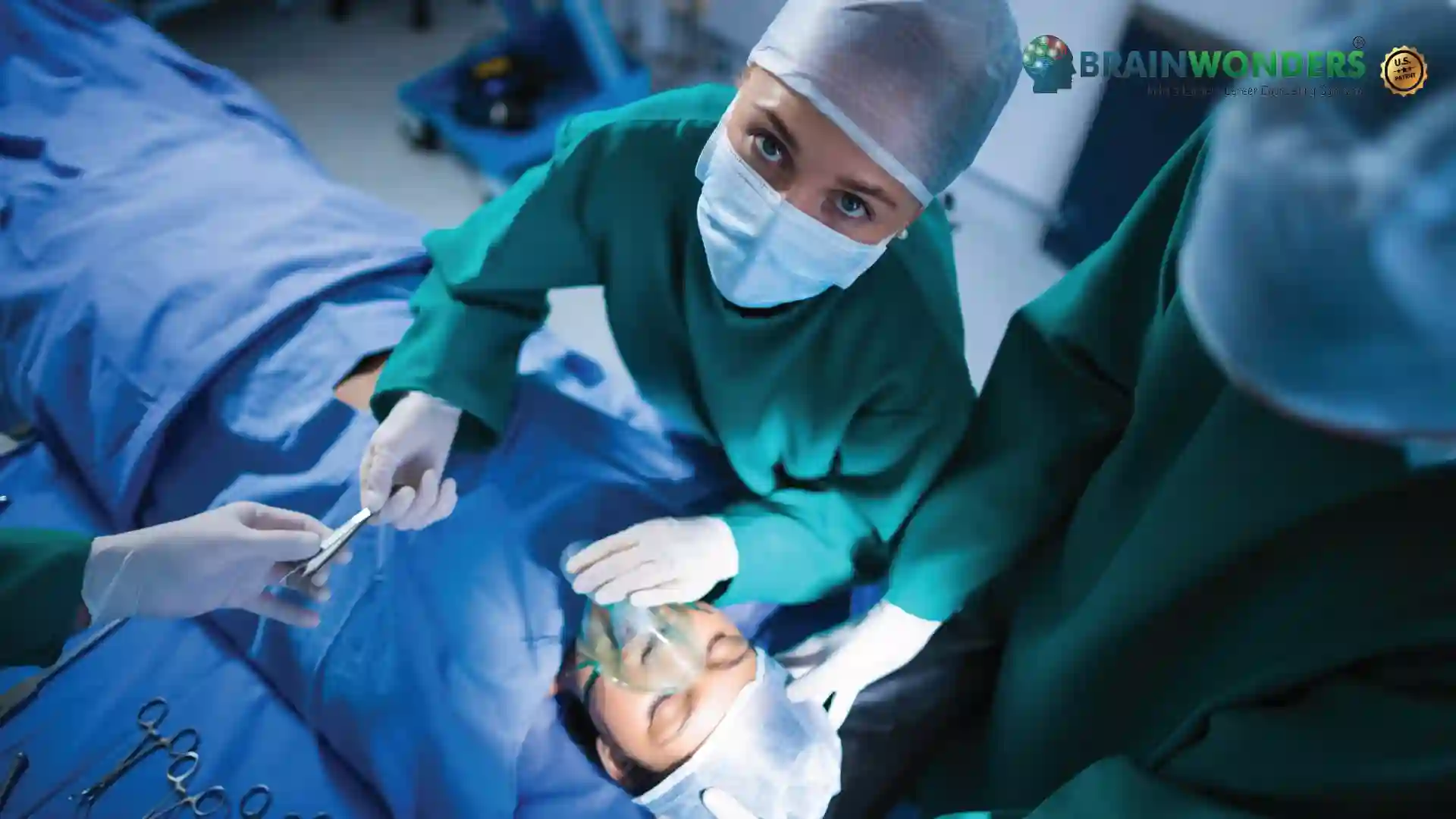How to become a Radiologist
Overview, Courses, Exam, Colleges, Pathways, Salary

Overview
Who is Radiologist ?
The doctors who are specialized in the field of medical imaging is known as radiologist. Radiologist interpret and execute medical images which help in the diagnosis and treatment of patients. Radiologists use medical imaging technologies like CT scans, MRIs, X-rays for diagnosis and treatment of patients' health problems. To become a radiologist, they need to pursue a license. Radiologists are medical professionals specialized in the field of medical imaging. Radiologist use skills and medical imaging techniques to produce visual representations of specific areas of the human body. A radiologist interprets the test results of an X-ray scan. The radiologist will consult with the best treatment plan after looking at the results of the imaging tests. Various specialized branch of radiology is cardiovascular radiology, breast radiology, emergency radiology. Imaging is done in form of include ultrasound, computerized tomography, X-rays, fluoroscopy, MRIs, PET scans, and nuclear imaging.
Typical day at work
What does Radiologist do?
- To teach and supervise residents or medical students.
- To assign and schedule examinations and radiologic personnel.
- To participate in education activities to maintain and develop expertise.
- Implementing protocols in aspects like power failures, drugs, resuscitation, emergencies and infection control.
- To serve as an offsite tele radiologist for facilitation.
- To provide advice on quantities and types of radiology equipment
- To participate in research projects involving radiology.
- To participate in quality improvement activities
- To develop treatment plans for radiology patients.
- To enforce and establish standards for protection of patients or personnel.
- To administer radiopaque substances by injection, orally, or as enemas to render internal structures
- To maintain or administer conscious sedation during and after procedures.
- To transmit and review images, information using communications systems or picture archiving
- To instruct radiologic staff in positions, desired techniques or projections.
- To evaluate medical information determining patients' risk factors
- Documenting the interpretation, performance or outcomes of all procedures performed.
- To monitor or develop procedures to ensure adequate quality control of images.
- Coordinating radiological services with other medical activities.
- Providing counselling to radiologic patients explaining the alternative processes, risks, benefits of treatment.
Abilities and Aptitude needed
What are the skills, abilities & aptitude needed to become Radiologist?
Becoming a Radiologist requires a combination of academic qualifications, technical skills, medical knowledge, and specific personal attributes. Radiologists are medical doctors specialising in diagnosing and treating diseases and injuries using medical imaging technologies such as X-rays, CT scans, MRIs, and ultrasound. Here are some of the essential abilities, skills, and aptitudes needed to pursue a career as a Radiologist:
- Medical Education: Obtain a medical degree (MBBS or equivalent) from a recognised medical school. It is the foundational requirement to become a Radiologist.
- Residency Training: After completing medical school, aspiring Radiologists must undergo specialised residency training in Radiology, typically lasting four to five years.
- Analytical Skills: Radiologists need strong analytical abilities to interpret medical images accurately and identify potential abnormalities or health conditions.
- Medical Knowledge: A deep understanding of human anatomy, physiology, and various medical conditions is critical for effective diagnosis and interpretation of medical images.
- Technical Skills: Radiologists must be proficient in operating and interpreting results from various imaging equipment, such as X-ray machines, MRI scanners, CT scanners, and ultrasound devices.
- Attention to Detail: Precision and attention to detail are vital in detecting subtle changes in medical images that could indicate health issues.
- Problem-Solving Abilities: Radiologists often encounter complex cases and unusual medical conditions, requiring strong problem-solving skills to arrive at accurate diagnoses.
- Communication Skills: Effective communication is essential to convey medical findings and recommendations to other healthcare professionals and patients.
- Empathy and Bedside Manner: As part of the medical team, Radiologists should demonstrate compassion and a compassionate bedside manner when interacting with patients.
- Continuous Learning: Radiology constantly evolves with medical imaging technology and research advancements. Radiologists must stay updated with the latest developments and research to provide the best patient care.
- Collaboration: Radiologists work closely with other healthcare professionals, including referring physicians and surgeons. The ability to collaborate effectively as part of a multidisciplinary team is essential.
- Stress Management: Radiologists may encounter high-pressure situations and a heavy workload. The ability to manage stress and make quick, accurate decisions is crucial.
Salary
Salary for Radiologist?
Radiologist Salary in India:
- Minimum Monthly Salary: For entry-level Radiologists or those with limited experience, the monthly salary might be around INR 80,000 to INR 1,20,000.
- Maximum Monthly Salary: Highly experienced and senior-level Radiologists, especially those working in reputable hospitals or specialized medical centres, may earn a monthly salary ranging from INR 3,00,000 to INR 5,00,000 or more.
- Minimum Annual Salary: For entry-level Radiologists or those with limited experience, the annual salary might be around INR 10 lakhs to INR 15 lakhs.
- Maximum Annual Salary: Highly experienced and senior-level Radiologists may earn an annual salary ranging from INR 36 lakhs to INR 60 lakhs or more.
- Highest Paying Jobs and Scope: The highest-paying jobs for Radiologists in India are typical, with large hospitals, diagnostic centres, and private healthcare institutions. Radiologists who demonstrate exceptional skills in medical imaging interpretation and have specialized expertise in areas such as interventional radiology or neuroradiology can command higher salaries. With the increasing demand for medical imaging services and the growth of the healthcare industry in India, the career scope for Radiologists is promising. Radiologists also have opportunities to work in research, academia, and telemedicine, further expanding their career options.
Pathways
How to become an Radiologist?
Entrance Exam
Entrance Exam for Radiologist ?
Courses
Which course I can pursue?
Best Colleges
Which are the best colleges to attend to become an Radiologist?
Industries
Which Industries are open for Radiologist?
Radiologists are specialized medical doctors who diagnose and treat diseases and injuries using medical imaging techniques. They play a crucial role in the healthcare industry, and their expertise is in demand across various sectors. Here are some of the industries and sectors that employ Radiologists:
- Hospitals: Radiologists are an integral part of hospital-based healthcare systems. They work in various departments, including diagnostic radiology, interventional radiology, and emergency departments, to interpret medical images and aid in patient diagnosis and treatment.
- Diagnostic Centers: Standalone diagnostic imaging centres and radiology clinics employ Radiologists to provide diagnostic services to patients.
- Medical Imaging Companies: Companies that develop and manufacture medical imaging equipment often hire Radiologists as consultants to help test and evaluate new technologies.
- Academic and Research Institutions: Radiologists may work in universities and research institutions, contributing to medical research, teaching medical students and residents, and advancing the field of radiology.
- Telemedicine and Teleradiology: With the advent of telemedicine, Radiologists can offer their expertise remotely through teleradiology services, providing interpretations of medical images from a distance.
- Government Agencies: Radiologists may get employed by government healthcare facilities, public hospitals, or medical research organizations.
- Armed Forces and Defense: In some countries, Radiologists may work in military hospitals or defence healthcare facilities to provide imaging services for military personnel.
- Private Practice: Radiologists may establish their private practice or join existing radiology groups to provide imaging services to patients referred by other healthcare providers.
- Multinational Corporations: Some large corporations with on-site healthcare facilities may employ Radiologists to provide medical imaging services for their employees.
- Healthcare Consulting: Radiologists may offer their expertise as healthcare consultants, advising organizations on medical imaging technologies and services.
internship
Are there internships available for Radiologist?
Internships for Radiologists are typically part of their specialized medical training during their residency program. After completing medical school and obtaining their medical degree, aspiring Radiologists must undergo specialized residency training in Radiology, which includes clinical rotations and hands-on experience in medical imaging.
During the Radiology residency, which typically lasts four to five years, residents gain practical experience in various imaging modalities such as X-rays, CT scans, MRI, ultrasound, and nuclear medicine. They work under the guidance and supervision of experienced Radiologists to develop their skills in interpreting medical images and diagnosing various medical conditions.
Hospitals and medical institutions offer radiology residency programs, and acceptance into these programs is highly competitive. Interested medical graduates must apply through a formal application process, which includes interviews and evaluations of their academic and clinical performance.
After completing the Radiology residency, Radiologists can pursue further sub-specialization through fellowships in interventional, neuroradiology, musculoskeletal, or pediatric radiology. Companies provide additional focused training and expertise in specific areas of Radiology.
Career outlook
What does the future look like for Radiologist?
The future outlook for Radiologists is promising, driven by advancements in medical imaging technology, an ageing population with increasing healthcare needs, and a growing emphasis on early and accurate diagnosis. As medical imaging continues to be an essential component of modern healthcare, the demand for Radiologists is to remain strong.
Radiologists will be crucial in diagnosing various medical conditions, including cancer, cardiovascular diseases, and neurological disorders. As the field of Radiology continues to evolve, there will be opportunities for specialization in subspecialties such as interventional radiology, neuroradiology, and musculoskeletal radiology.
Additionally, telemedicine and teleradiology advancements are expanding, enabling Radiologists to provide their expertise remotely, even in underserved areas. Integrating artificial intelligence and machine learning in medical imaging analysis will further enhance Radiologists' diagnostic accuracy and efficiency.
With healthcare systems worldwide prioritizing early detection and personalized medicine, Radiologists will be at the forefront of medical decision-making. The profession will likely see steady job growth and continued demand, making Radiology an attractive and rewarding career path for aspiring medical professionals.




.webp)


